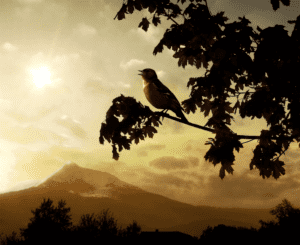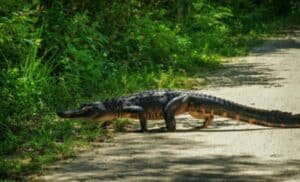If you are looking that Why Do Raccoons Climb Trees At Night, then your search ends here. Raccoons are opportunistic omnivores and will eat a variety of foods. Climbing trees at night allows them to reach fruits, nuts, and other food sources that may be out of reach on the ground.
They are known for their distinct black mask around their eyes and ringed tails.
Table of Contents
Reasons For Raccoons To Climb Trees:
1. Nocturnal Creatures
One of the main reasons raccoons climb trees at night is because they are nocturnal animals. This means that they are most active during the night, and their bodies are adapted for this lifestyle. Raccoons have excellent night vision and a keen sense of smell, making them efficient hunters in the dark.
2. Foraging for Food
Another reason raccoons climb trees at night is to forage for food. They have omnivorous diets, which means they eat both plants and animals. At night, raccoons can hunt for small prey like mice, insects, and birds. They also scavenge for fruits, nuts, and other plant matter that may be found in trees.
3. Protection from Predators
Trees provide natural protection for raccoons against predators. By climbing up high in the branches, they are out of reach from larger predators like coyotes and foxes. The tree’s thick canopy also provides shelter and camouflage, making it difficult for predators to spot them.
4. Safety and Shelter for Raccoons
Raccoons are known to be excellent climbers, and they have adapted to living in trees. They can build nests or dens up high in the branches, providing a safe place to rest during the day. This is especially useful for mother raccoons who need to protect their young from potential threats during the vulnerable first few months.
5. Curiosity and Playfulness
Lastly, raccoons are naturally curious and playful animals. They may climb trees out of curiosity or for entertainment. It’s not uncommon to see a group of young raccoons playing in trees at night, using branches as obstacle courses.
What Are Raccoon’s Adaptations To Climb Trees?
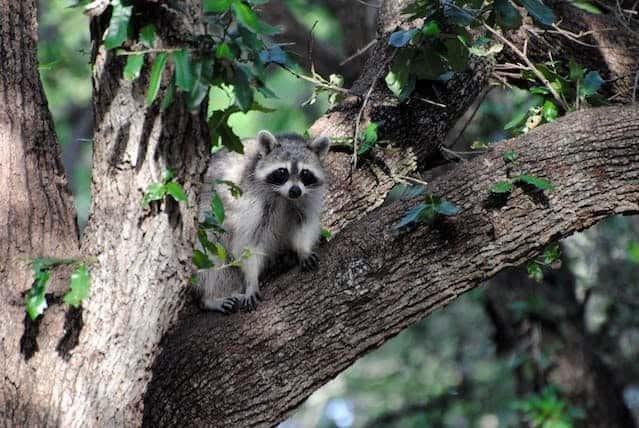
Raccoons have several physical adaptations that make them well-suited for climbing trees. Their sharp claws and flexible ankles allow them to grip onto tree trunks and branches with ease. They also have strong hind legs, making it easier for them to jump from branch to branch.
Their long, bushy tails act as balancing tools, helping them maintain their stability while moving through the trees. Additionally, their front paws have sensitive pads that provide traction and allow them to feel around for food or potential dangers.
Do Raccoons Baby also climb trees at night?
Yes, baby raccoons, also known as kits or cubs, will also climb trees at night. They are born in the spring and spend the first eight weeks of their lives inside their den with their mother. As they grow and become more adventurous, they will start to explore their surroundings and learn how to climb trees. Climbing trees is an essential skill for raccoons, and they will continue to use this ability throughout their lives.
Why Do Raccoons Climb Trees At Night? Do Raccoons Sleep In Trees?
Yes, raccoons can sleep in trees. In fact, they often prefer to sleep in trees rather than on the ground. This not only provides them with protection from predators but also keeps them off damp or wet ground. Raccoons are also known to switch up their sleeping spots, so they may not always choose a tree.
Do Raccoons Nest In Trees?
Yes, raccoons can build nests in trees. They are skilled at using branches, leaves, and other materials to create a cozy shelter high up in the tree. These nests provide protection from predators and harsh weather conditions. Raccoons may also use abandoned bird or squirrel nests as their own.
What Does A Raccoon Nest Look Like?
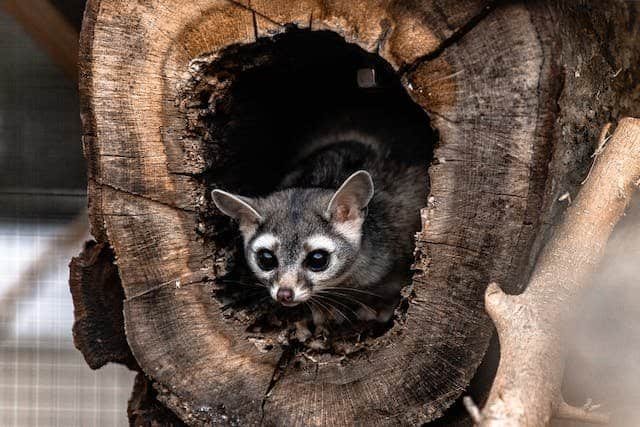
A raccoon nest is typically a pile of leaves, twigs, and other materials that are tightly woven together to create a cozy shelter. It can be up to 30 feet above the ground and often looks like a large ball-shaped structure. It may be located in the forks of branches or inside tree cavities. Raccoons will often line their nests with soft materials like moss and grass for added comfort.
In both cases, raccoon nests are typically constructed with materials that provide insulation and protection from the elements. The nests can also be lined with fur or other soft materials to keep the raccoons warm and comfortable.
How climbing trees serves as a defense mechanism
Aside from protection from predators, climbing trees serves as a defense mechanism for raccoons in other ways. When threatened or feeling unsafe, raccoons instinctively climb up trees to escape danger. This is especially useful for young raccoons who may not be able to defend themselves.
Can Raccoons Climb Walls?
Yes, raccoons can also climb walls. Their climbing abilities are not limited to trees; they can also scale vertical surfaces with ease. This is due to their sharp claws and strong hind legs, which allow them to grip onto rough surfaces like brick or wood.
Do Raccoons Only Come Out At Night?
While raccoons are most active at night, they can also be spotted during the day. This is especially true for urban areas where there is less competition for food and fewer predators. Raccoons may also come out during the day if they are starving or desperate for food.
Social Behavior Of Raccoons
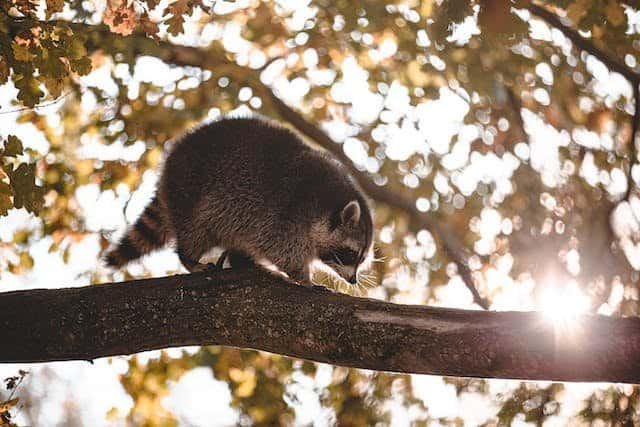
Aside from their climbing abilities, raccoons are also known for their social behavior. They are highly intelligent and can adapt to various environments, making them successful in both urban and rural areas. Raccoons are mostly solitary animals but can form groups called “nursery colonies” during the breeding season.
During the day, raccoons will usually rest in their dens, which can be found in trees, burrows, or even abandoned buildings. At night, they will venture out to forage and hunt, often traveling several miles to find food sources. Raccoons are also very vocal animals, communicating through a variety of sounds such as purring, chittering, and growling.
Final Thoughts
There are several reasons why raccoons prefer to climb trees at night. It provides them with safety from predators, access to food sources, and easier navigation through their environment. So the next time you see a raccoon climbing a tree at night, remember that it is just doing what comes naturally to them.


